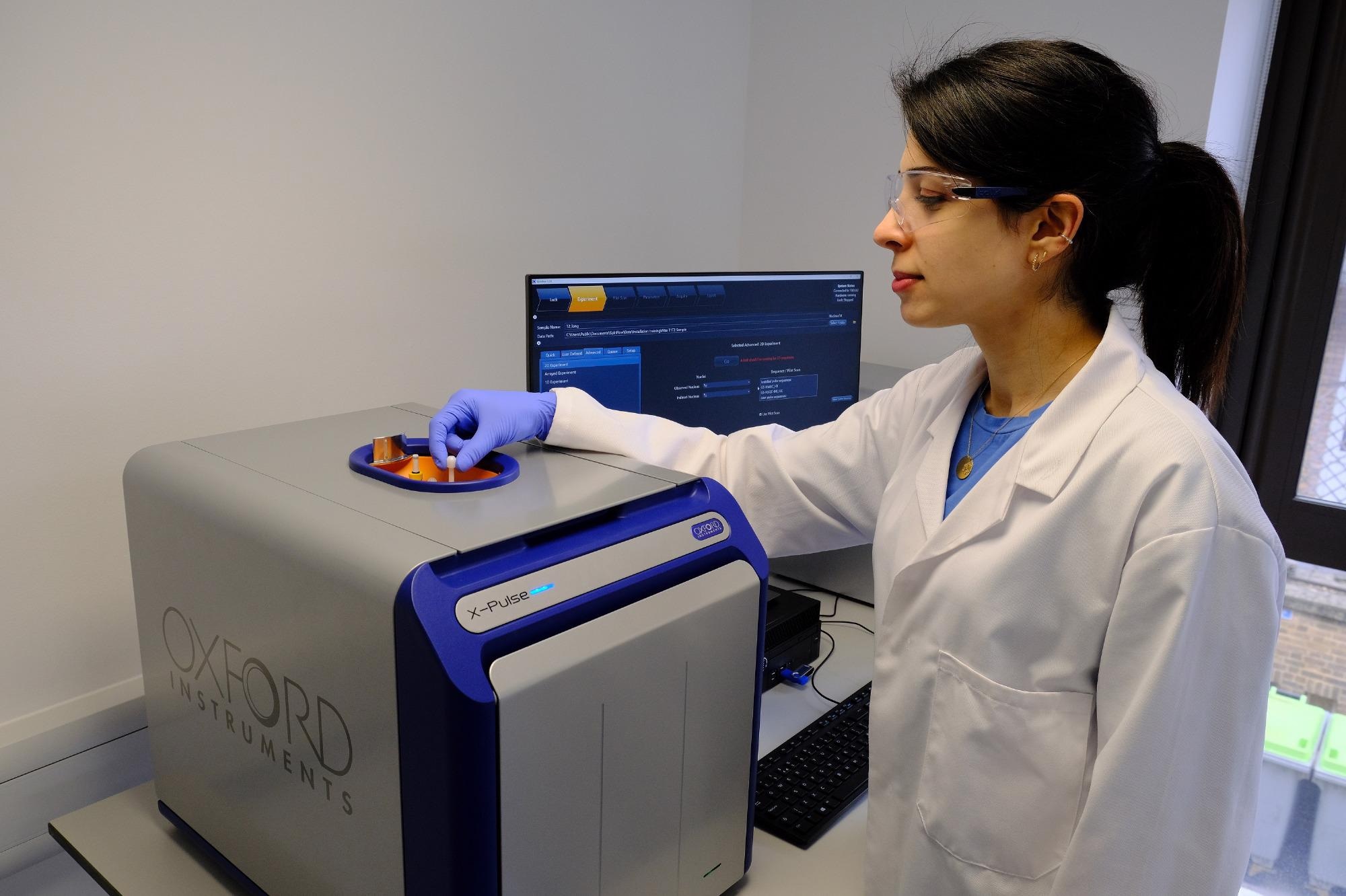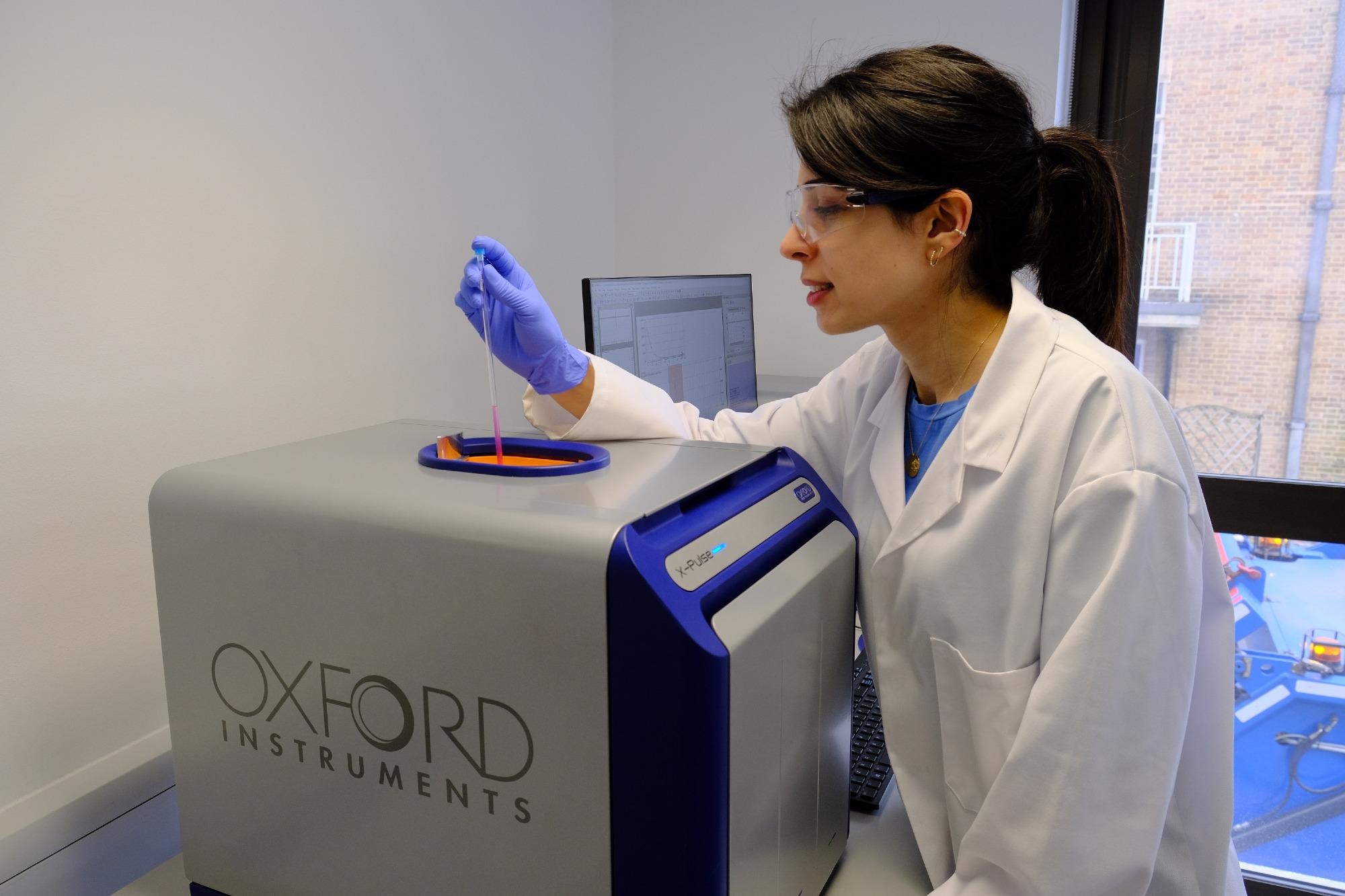Oxford Instruments, a leading provider of analytical equipment to the battery research and manufacturing communities, today announced a new R&D collaboration has been formed with the University of Oxford’s Department of Materials and the Henry Royce Institute (Royce).

It will work to accelerate research in future battery technologies by using benchtop Nuclear Magnetic Resonance (NMR) to develop new methods to monitor reactions in battery cells and use this understanding to enhance their performance. It aims to contribute to the UK’s industrial strategy to fight climate change through the development of new technology for net zero-emission vehicles and will contribute to realising practical lifetimes for beyond Li-ion technologies such as the Lithium-Air battery that promises a step-change improvement in energy density.
Researchers will use X-Pulse, Oxford Instruments’ benchtop NMR spectrometer, to characterise the behaviour of a wide range of different elements within novel battery material formulations during electrochemical processes. X-Pulse is the world’s only broadband X-nucleus benchtop NMR spectrometer. Critical to the project is the development of in-operando NMR operation in an inert glovebox environment.
Prof. Peter G. Bruce, Department of Materials, University of Oxford said, “We are delighted to be working with Oxford Instruments on this project and look forward to a fruitful collaboration. Housing the instrument in an inert atmosphere opens the door to new experimental techniques and we are excited by the science this will enable. We are grateful to Royce for funding the spectrometer and look forward to welcoming the student to Oxford in the autumn.”
The Bruce Group at Oxford University’s Department of Materials focuses on understanding the properties of new materials used in energy storage, with a particular emphasis on solid-state chemistry and electrochemistry. Prof. Peter Bruce FRS is among the "The World's Most Influential Scientific Minds" as a Thomson Reuters/Web of Science Highly Cited Researcher for six years in a row, 2015-2020. The group’s research aligns closely with the UK’s industrial strategy and the wider global drive to a greener economy. The UK’s Engineering and Physical Sciences Research Council (EPSRC) has given the project an Industrial Cooperative Award in Science & Technology (CASE). This will provide a dedicated PhD researcher with additional access to training, facilities, and expertise at Oxford Instruments’ headquarters.

Dr Ian Wilcock, Managing Director of Oxford Instruments Magnetic Resonance and NanoAnalysis, commented, “Our R&D and applications teams are very excited to be partnering with leading scientists at Oxford University and Royce. The NMR methods we develop together will not only contribute to new higher performance battery materials but will additionally ensure the quality of commercialised energy storage products.”
Prof Philip Withers, Chief Scientist at the Henry Royce Institute said, “We are excited to see what new research will come from the investment in the benchtop Nuclear Magnetic Resonance and its effects on our national ambitions to fast-track the electrification on vehicles to support the UK’s transition to zero carbon. At the Henry Royce Institute we are often finding that our most innovative collaborations bring together researchers and equipment providers to pioneer new technologies and we look forward to working with Oxford Instruments to meet our common goals.”
Find out more about how benchtop NMR accelerates next generation research at https://nmr.oxinst.com/batteries